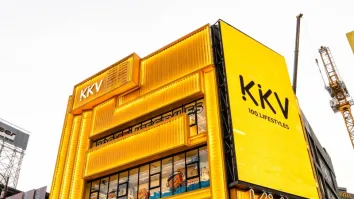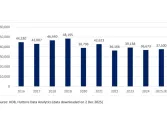
The growth of cross-border commerce
And why leveraging payments is vital in global growth.
Traditional commerce was disrupted when the COVID-19 pandemic spread and businesses scrambled to adapt to new ways in reaching their customers to keep afloat.
A year from now, what stands consistent amidst the changes is how cross-border commerce has always been a gateway for enterprises, marketplaces and big businesses to reach not only each other but their consumers as well.
According to Payoneer’s regional enterprise VP Nagesh Devata cross-border commerce is always here, that even as consumers we may have participated in cross-border commerce.
Since the pandemic, Nagesh said that cross-border commerce grew by up to two times. Meanwhile, marketplaces are rising with over 50% of all digital transactions happening in marketplaces.
This means that anyone, regardless of where they are, can start a business that isn’t limited to one market.
“Any one of us could now start a business, and we're no longer limited to the place where we live or where we reside, to be able to sell that,” Nagesh said.
Holy grail
However, borderless commerce's biggest challenge is finding ways to lessen the friction for consumers by not having them jump through different payment types when they make a purchase. It’s about giving them the ability to use their payment of choice without being forced to go through the hassle of a different payment channel.
L'Oreal India’s chief digital officer, Anil Chilla, called this ability the ‘holy grail’.
“If I'm a consumer here, I should have the ability to pay with a payment of my choice, but still be able to purchase from all across the world without going through the hassle of a particular payment type or not,” Anil said.
Cheong Chia Chou, chief executive officer of PUC Berhad, also added that participating in cross-border commerce is the trend of today.
“The world gets smaller in a way or borderless. Having to be able to buy anywhere literally and send it anywhere is really the moving forward trend,” Cheong said.
Shaping the digital landscape
The rise of cross-border commerce is just one trend discussed in the recently concluded webinar called “APAC’s Digital Evolution: Digital trends that changed the world”.
According to Quiron Cunha, senior strategy director of ZALORA these kinds of trends in the digital space have been growing because it has become easier and easier to buy online.
“Although we still have some pain points, many of these pain points, the payment side, the logistic side, have been shrinking. And there have been less problems and more opportunities,” Quiron said.
The rapid transformation of the digital landscape was attributed to how markets adapted because of the pandemic. According to Senthil Kumar, global head of commercial at Janio Asia, COVID-19 has aided digital transformation more than any other chief information officer has.
Traditional sales channels slowed down or even grounded to a halt, with being fully recovered still in the distant future.
Senthil said that even the logistics market had to adopt many measures especially from a digital aspect.
Crossing borders
Even with all the changes in the digital landscape, the biggest hurdle in digital commerce remains the friction when it comes to payments.
Companies who want to grow their businesses by crossing borders know to partner with a payment platform Payoneer who can connect them not just with consumers, but to enterprises, marketplaces and other large businesses.
A global leader in payments like Payoneer has been known to be more efficient than most banks when it comes to moving money across borders.
Nagesh said that as a business, you would want to be able to access your funds quickly and make payments or transfers in a snap. You would want to be able to pay operating expenses whilst managing all these in an efficient way.
Taking advantage of the growth of cross-border commerce means that businesses must think about being able to operate multiple corridors.
“And the reality is, I may not want to do it just with a bank. That bank is probably very limiting in terms of what I can do. So I would want to have a platform that would give me the ability to go global,” Nagesh added.



















 Advertise
Advertise





